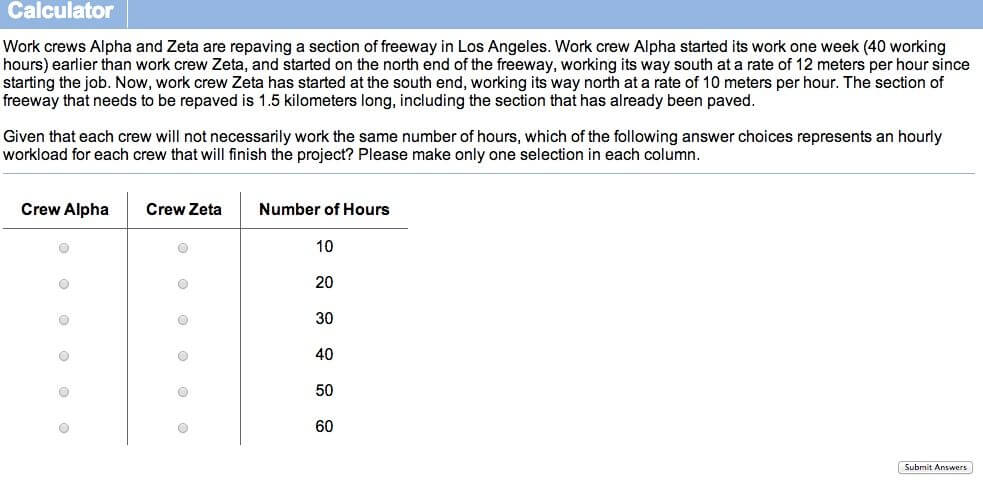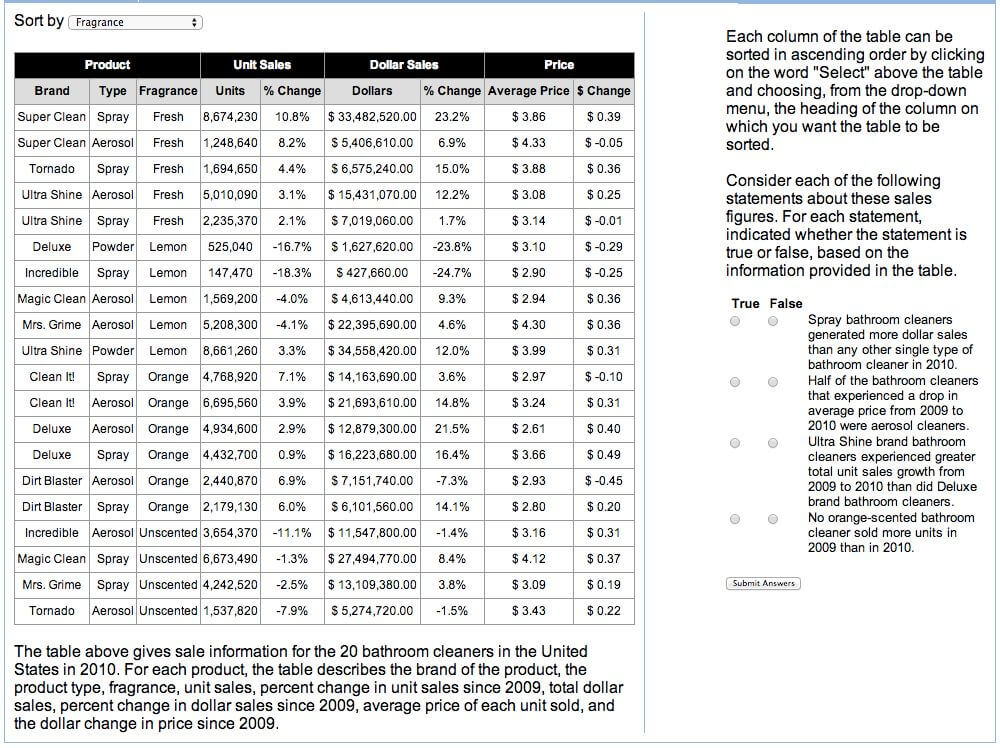3 Keys to Dominating GMAT Integrated Reasoning
What should you make of the GMAT Integrated Reasoning section? Two years after its introduction, there’s still no great answer to that question. Business school admissions offices still aren’t giving all that much weight to your IR score. And yet, you have to post one. If the first 30 minutes of your GMAT are going to be spent muddling through this challenging section one way or the other, you might as well do as well as possible on it, right? Whether you’re an IR pro or you dread this section like the plague, here are three tips to help you navigate the otherwise murky waters of GMAT Integrated Reasoning:
1. Focus on the Quant and Verbal Sections
I know it may seem a little weird for me to start an article about how to improve your Integrated Reasoning score by telling you to focus most of your study time on the other sections of the test. But hear me out. The reality is that most of core math and verbal concepts you’ll see in Integrated Reasoning questions are the same as what’s tested elsewhere on the GMAT. Granted the questions formats are a bit more convoluted, but the core competencies are the same.
Consider this example from the Veritas Prep website:

What do you notice? Looks like a run-of-the-mill distance/rate/time problem like you’d expect to see on GMAT Problem Solving, doesn’t it? (Here’s an article that shows you a shortcut for solving problems like this). Sure, you have to figure out what all those different answer choices mean with respect to Crew Alpha and Crew Zeta. But solving the actual problem itself isn’t all that hard, and it’s the type of thing you should be studying for the GMAT quant section anyway. Whether a Table Analysis question asks you to calculate a percent increase/decrease or a Two-Part Analysis question asks you to identify an author’s assumption, it’s all stuff you should already know how to do if you’ve adequately prepared for the other sections of the exam.
2. Know When to Cut Your Losses
Let’s be honest: The hardest part about GMAT Integrated Reasoning for most students is time management. You have 30 minutes to answer 12 questions, which only leaves 2.5 minutes per question. But unlike normal GMAT problem solving, each IR question has multiple parts! How can you possibly be expected to finish them all?
Well, the good news is that you don’t have to. When it comes to the Integrated Reasoning section, quality is more important than quantity, meaning that you don’t have to answer every question correctly to get a good score. In fact, you can get quite a few wrong and still get an above-average score. Here’s a short video about the important tradeoff between “time”and “accuracy”that you need to constantly juggle on the GMAT, and it applies just as much to IR as it does to the other sections:
So what does this mean for you? Learn when to cut your losses. Figure out your strengths and weaknesses, and don’t spend much time on questions that give you particular difficulty. If Multi-Source Reasoning questions always take you the longest and you never seem to get them right anyway, for example? Consider skipping one or two of them altogether and save the time for questions you have a better chance of getting right. Learn to speed up when you see questions you can tackle quickly, and slow down when you need extra time to figure something out. And like with GMAT Reading Comprehension, don’t waste time reading every single thing in the prompts. If you truly want to boost your IR score, sometimes less really is more.
3. Reading Comprehension is the Key
GMAT Integrated Reasoning is as much about understanding what the question is asking as it is about actually solving questions. As I mentioned in point #1, the math and verbal concepts tested in IR aren’t all that hard (or, at least, they’re not new). The difficulty is with the way the questions are asked. So take your time. Read the questions for “Big Picture”understanding like you would a Reading Comprehension passage. Don’t get lost in the details, but rather spend some time getting your mind around the interplay among the content in the different tabs and what information each table or chart is presenting. Toward that end, always start by reading titles and captions, because they create the framework within which everything else in the question works. And always, always read the questions closely and look for tricky wording that’s meant to throw you off.
Consider this sample Table Analysis question, also from the Veritas Prep website:
 Let’s look specifically at Statement #4. Here it is again in case it’s too small for you to read in the graphic above:
Let’s look specifically at Statement #4. Here it is again in case it’s too small for you to read in the graphic above:
“No orange-scented bathroom cleaner sold more units in 2009 than in 2010.”
Notice that I’ve already taken the liberty of sorting the table by “Fragrance”since the statement is asking about “orange-scented”bathroom cleaner.
So what do you think? Is the statement True or False? At first glance, it would seem to be False. After all, the “Unit Sales”columns for all of the orange fragrance products show positive percent change, meaning they did sell more units. Right? But wait. What do the numbers in the “Unit Sales”columns represent? Upon a closer reading of the caption under the table, it’s clear that the numbers represent 2010 numbers as compared to 2009. And because Statement #4 is expressed in the negative, it’s actually TRUE that “no”orange-scented bathroom cleaners sold more units in 2009 than in 2010 because the positive growth numbers in the table indicate that more were indeed sold across the board in 2010, without exception.
I know it can be tricky, but that’s the point: Pay as much attention to the wording of the questions and prompts as you do to the actual math and verbal being tested, and it will serve you well.
[xyz-ihs snippet=”MBA-WBR-The-GMAT”]
Brett Ethridge is the founder of Dominate the GMAT, a leading provider of GMAT courses online and topic-specific GMAT video lessons. He has taught the GMAT for 10 years and loves working with students to help them achieve their highest potential. Brett is an entrepreneur, a triathlete, and an avid Duke basketball fan.

